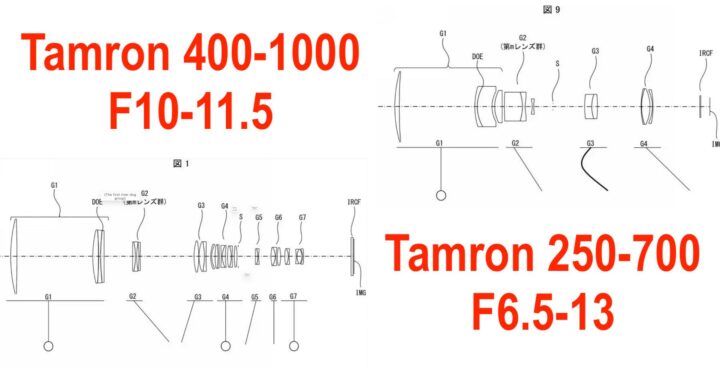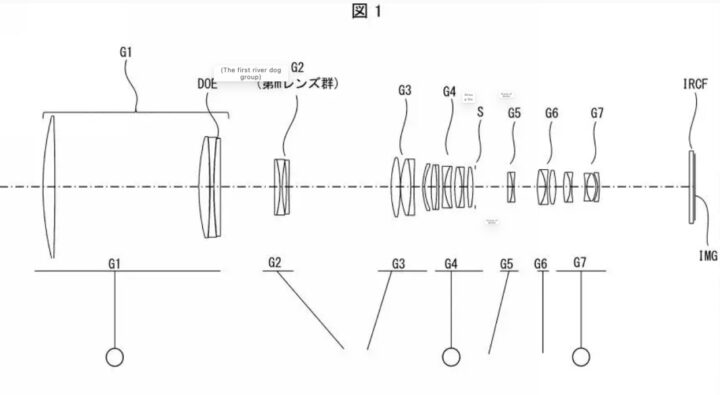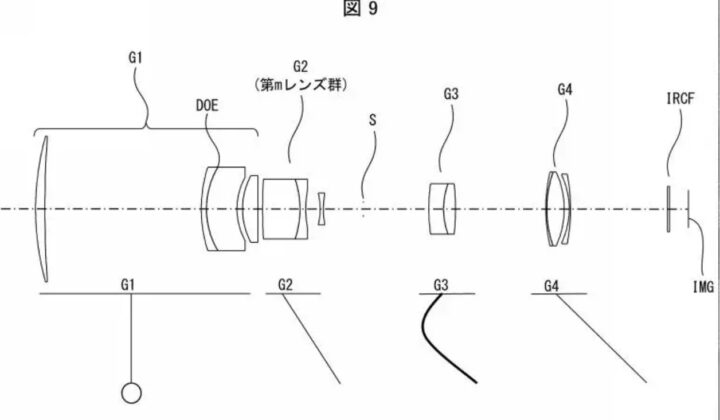Tamron Patents Big Zoom Lenses

The following patents for Tamron big zoom lenses have been spotted by asobinet:
- Tamron 400-1000mm f/10-11.5
- Tamron 250-700mm f/6.5-13
Asobinet does not specify if these are designed for FF or APS-C (but likely for FF).
The approach is similar to the one of Canon with the Canon RF200-800mm F6.3-9 IS USM: keep costs and size contained thanks to a slower aperture.
As far as long telephoto zooms goes, we Fujifilm shooters are currently covered by the Fujinon XF 150-600mm f/5.6-8 R LM.
Last but not least: if you look at Tamron lenses specifically designed for APS-C, then these are the current patents:
Down below the full details.
Summary
- [Public number] P2024100570
- [Opening date] 2024-07-26
- [Name of invention] Zoom lens and imaging device
- [Apply date] 2023-01-16
- [Applier]
[Identification number] 000133227
[Name or name] Tamron Corporation - [Background technology] [0002] In recent years, shooting devices using solid image sensors such as digital still cameras have become popular. Along with that, the long focus of the optical system has progressed, and the imaging device system including the so-called telephoto-side zoom lens or telephoto-side zoom lens that includes a telephoto lens with a focal length of 80 mm in 35 mm equivalent is rapidly becoming popular. By having a diffraction optical element (hereinafter referred to as “DOE”) in the zoom area of the zoom lens, lenses that have been reduced in size and weight while maintaining high resolution have been considered.
- [0007] However, the zoom lens described in Patent Document 1 is large in the first lens group and requires weight reduction. In addition, the zoom lens described in Patent Document 1 has a problem that the balance with the weight of the image surface is poor, and image shaking such as hand shake is likely to occur when shooting on the telephoto side. In addition, in the zoom lens described in Patent Document 2, although the DOE is placed on the image surface side in the first lens group, the first lens group is very thin, and the diffraction surface of the DOE is close to the lens surface on the most object side of the first lens group relative to the optical total length. It exists in a good position. In the zoom lens described in Patent Document 3, the diffraction surface of DOE is placed on the object side in the first lens group. For this reason, there is a problem that the zoom lens described in Patent Document 2 and the optical system described in Patent Document 3 have insufficient countermeasures against stray flares.
- [0008] One aspect of this invention aims to provide a small, lightweight, and high optical performance with reduced ostray flares and a zoom lens and imaging device.
Example 1
- Focal length: 411.754-970.006
- F value: 10.342-11.490
- Half angle of view: 2.925-1.243
- Statue height: 21.633

Example 3
- Focal length: 250.000-710.730
- F value: 6.579-12.917
- Half angle of view: 4.992-1.738
- Statue height: 21.633


